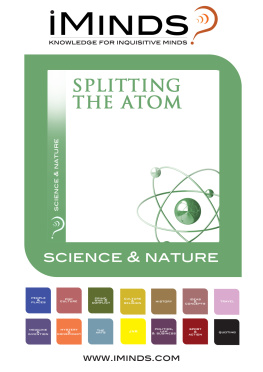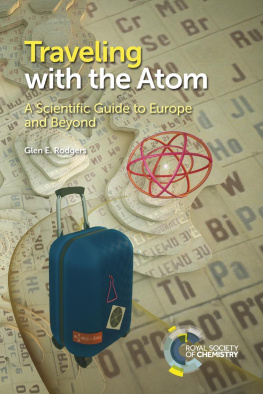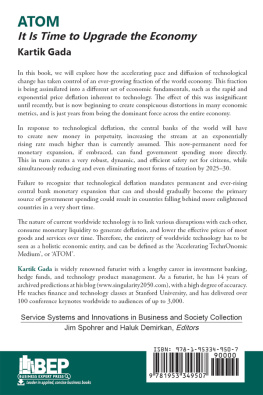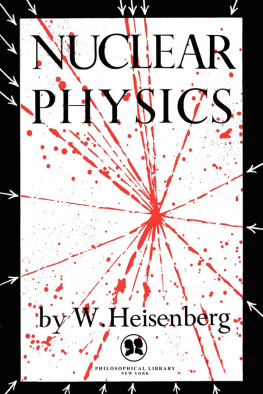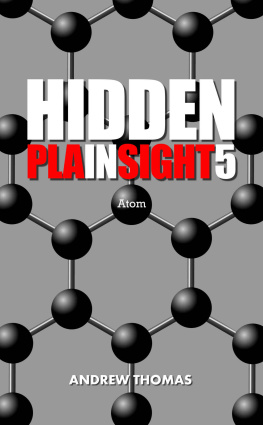DOES THE ATOM
HAVE A DESIGNER?
DOES THE ATOM
HAVE A DESIGNER?
Lakhi N. Goenka, Ph.D.
December 2013
Updated July 2019
Text Copyright 2013/2016 eThermal, LLC
All Rights Reserved .
ISBN-10: 0692789170
ISBN-13: 978-0-692-78917-9
We are in the position of a little child, entering a huge library whose walls are covered to the ceiling with books in many different languages. The child knows that someone must have written those books. It does not know who or how. It does not understand the languages in which they are written. The child notes a definite plan in the arrangement of the books, a mysterious order, which it does not comprehend, but only dimly suspects. That, it seems to me, is the attitude of the human mind, even the greatest and most cultured, toward God. We see a universe marvelously arranged, obeying certain laws, but we understand the laws only dimly. Our limited minds cannot grasp the mysterious force that sways the constellations.
- Dr. Albert Einstein
Table of Contents
Synopsis
Did the order and function of the Atom arise from random events?
Does the Atom have a Designer? critically examines if the order and complexity of the Atom arises simply from random events following the Big Bang. The Atom, with its complex structure, its quantized properties, and its many dynamic interactions, realizes the physical, electromagnetic, nuclear, chemical, and biological functionalities of the universe.
This book, written by a secular researcher searching for answers, examines subatomic behaviors such as wave-particle duality & quantum superposition, quark-gluon interactions within the atomic nucleus, and electron-photon interactions within atomic orbitals, as well as their role in realizing the many functionalities of the Atom.
The Why Questions related to the Atom are discussed in depth using Aristotles four causes. The question: Does your kitchen table have a Designer? does not require a scientific or a mathematical explanation. It requires a logical one. Aristotles theory of causality was developed to show that four related causes (or explanations) are needed to explain change in the world: a material, a formal, an efficient, and a final cause. A complete explanation of any material change will use all four causes. The Why Questions related to the Atom are investigated in great depth using this approach toward causality.
The commonly cited objection Then who designed the Designer? is also addressed in the book. The controversial and unverified Multiverse Hypothesis, often used against a Design argument, is also discussed.
And yes, your kitchen table does have a Designer.
(Note that this is an argument based on Design, and not on fine tuning.)
Atomic Structure
First-ever Image of a Hydrogen Atom
Using ultrafast lasers, wave packet experiments (2013) have been performed by A. S. Stodolna et al* illustrating how coherent superpositions of quantum mechanical stationary states describe electrons that move on periodic orbits around nuclei.
(Image courtesy Physical Review Letters )
* Related reference:
Hydrogen Atoms under Magnification: Direct Observation of the Nodal Structure of Stark States
A. S. Stodolna et al, Phys. Rev. Lett. , 213001 Published 20 May 2013
Introduction
The fundamental building block for the universe is not a passive billiard ball. It is a complex system of interacting particles called the Atom (which can perhaps be more appropriately referred to as The Atomic System). This book examines if the Atom with its complex structure and its multiple functionalities arises simply from random events, or if it has a Designer.
Even the simplest of atoms, Hydrogen and Helium, consist of numerous subatomic particles such as quarks, gluons, and leptons that interact together in complex ways. These subatomic particles represent a fine balance of forces, have special quantum properties, interact together in complex ways, follow complex laws, and obey multiple rules of order, all to ultimately provide function. Atoms dont simply follow lawsthey provide function. Atoms are a fundamental system of parts (subatomic particles) that dynamically interact together to provide multiple levels of functionality.
The nucleus, or heart, of the Atomic System formed within fractions of a second after the Big Bang, and combined later with electrons that balanced out the charge within the system. The Atomic System represents the starting level of complexity for the universe, and consists of numerous subatomic particles whose quantum structure and interactions enable the physical, electromagnetic, nuclear, chemical, and biological functioning of the universe.
This book critically examines whether the Proton-Neutron-Electron structure of the Atom and its resulting functionalities are simply the result of random events. Topics investigated include an examination of the quantum properties and behaviors necessary for electromagnetism, the structure of and the interactions within the atomic nucleus, and the many resulting functionalities of the Atom. Related topics such as quantum field theories and the role of symmetry are also assessed.
Note that this book initially uses a particle-only formulation to discuss Atomic structure and its quantum interactions. This makes it easier to understand fundamental subatomic particles and their interactions, as well as the resulting atomic structure. However, Quantum Field Theory (QFT), in which particles are presumed to be excitations of underlying fields that permeate all of space, is gaining wider acceptance. QFT, which comes with some of its own issues, is discussed in depth later in the book.
The Why Questions about the Atom are addressed in some depth later in this book using Aristotles four causes. Consider the question: Does your kitchen table have a Designer? The answer does not require a scientific or a mathematical explanation. It requires a logical one.
Another example of design would be if a hiker on a remote mountain trail comes upon some large rocks arranged into a message: Have a great hike. There is an amazing vista a mile up the trail. The hiker would logically conclude that these rocks could not have arranged themselves into a message by chance, although the specific identity of the designer may never be established.
Aristotles theory of causality was developed to show that there are four (related) causes (or explanations) needed to explain change in the world. A complete explanation of any material change will use all four causes.
Discussion of causes and causality go back to Ancient Philosophy, featuring prominently in Aristotle's Metaphysics and Physics . Ref [1] on Metaphysics discusses Aristotles four causes in some depth.
From [1]: The study of nature was a search for answers to the question Why? before and independently of Aristotle. A critical examination of the use of the language of causality by his predecessors, together with a careful study of natural phenomena, led Aristotle to elaborate a theory of causality. This theory is presented in its most general form in Physics II 3 and in Metaphysics V 5. In both texts, Aristotle argues that a final, formal, efficient or material cause can be given in answer to a why-question.



